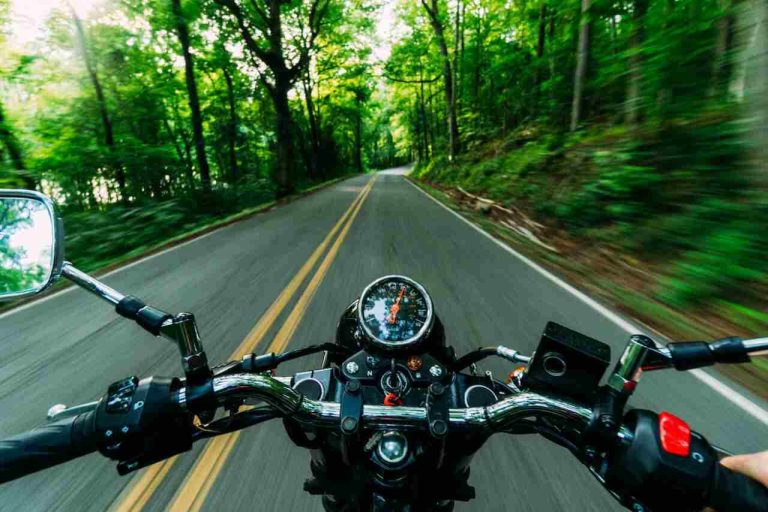Embarking on a solo motorcycle trip across the country is not just a journey; it’s a personal odyssey, a test of resilience, and a celebration of freedom on two wheels. As you gear up for this thrilling adventure, meticulous planning becomes your closest companion. In this guide, we’ll explore the essential logistics of planning a solo motorcycle trip, offering detailed tips for a safe and successful cross-country adventure.
Route Planning: The Road Less Traveled and Iconic Highways
Begin your journey with a detailed route plan that combines iconic highways with lesser-known roads for a diverse and enriching experience. Utilize online mapping tools specifically designed for motorcycle routes, allowing you to customize your path, taking into account scenic views, biker-friendly roads, and points of interest. Consider factors such as weather conditions, road quality, and the overall terrain to ensure a well-rounded and enjoyable route.
Safety First: Gear Up for the Ride
Your safety gear is your lifeline on the open road, and ensuring it meets safety standards is non-negotiable. Invest in a high-quality helmet, protective jacket, gloves, and boots designed for motorcycle riders. Additionally, pack rain gear to prepare for unexpected weather changes, and consider incorporating high-visibility gear to enhance your presence on the road, especially during low-light conditions.
Bike Maintenance: Preparing Your Two-Wheeled Companion
A well-maintained bike is key to a successful journey. Schedule a thorough pre-trip inspection, checking tire pressure, brakes, lights, and fluid levels. Carry a basic toolkit, spare parts, and a tire repair kit to handle minor issues on the road. Familiarize yourself with basic bike maintenance to address unforeseen challenges confidently. Regularly check your bike’s condition during stops to catch potential issues before they escalate.
Solo Rider Safety Precautions: Prioritize Personal Security
As a solo rider, your personal security is paramount. Share your itinerary and expected arrival times with someone you trust, providing regular check-ins. Consider using GPS tracking devices for an added layer of security and peace of mind. Stay vigilant about your surroundings and be cautious when interacting with strangers. Prioritize well-lit and secure accommodations for overnight stays.
Navigational Tools: Embrace Technology and Backup Plans
Leverage technology for seamless navigation using GPS devices specifically designed for motorcycles. However, always have a backup plan, including paper maps and a compass, in case of technological glitches or remote areas with limited signal coverage. Stay informed about the road conditions and potential detours, adjusting your route as needed.
Accommodation Strategies: Rider-Friendly Stays
Plan your overnight stays in advance, opting for accommodations that cater to motorcyclists. Biker-friendly hotels and lodges often provide secure parking, essential amenities, and camaraderie with fellow riders. Booking accommodations in advance ensures a more relaxed and enjoyable trip, minimizing the stress of finding a place to stay at the end of a long riding day. Explore rider forums or apps that recommend motorcycle-friendly accommodations.
Emergency Preparedness: Expect the Unexpected
Prepare for unforeseen circumstances by carrying an emergency kit that includes a first aid kit, essential tools, a flashlight, and emergency contact information. Familiarize yourself with local emergency services along your route, and carry a list of contacts for roadside assistance. Know basic first aid procedures, and consider taking a basic motorcycle safety course to enhance your preparedness.
Fueling Your Journey: Plan for Gas Stops
Gauge the distance between gas stations, especially in remote areas. Plan your fuel stops strategically to avoid running on empty. Carry extra fuel containers for extended stretches where gas stations may be scarce. Keep an eye on your bike’s fuel efficiency and be mindful of your range, planning your stops accordingly. Factor in variations in fuel prices and availability in different regions. Motorcycles are environmentally friendly alternatives to most other forms of cross-country transportation, but they still require pitstops, so be sure to include gas tank refuels in your itinerary.
Physical and Mental Well-being: Listen to Your Body
Long hours on the road can take a toll on your body and mind. Prioritize regular breaks to stretch, hydrate, and refresh. Listen to your body’s signals, recognizing when fatigue sets in. Adequate rest is essential for maintaining focus and alertness throughout your journey. Incorporate exercises and stretches during breaks to alleviate muscle tension and improve circulation. Stay hydrated and pack healthy snacks to maintain energy levels.
Embrace the Freedom: Flexibility in Itinerary
While planning is crucial, leave room for spontaneity. Unexpected discoveries and detours can become the highlights of your trip. Embrace the freedom of the open road and be open to exploring unplanned gems along the way. Consider extending your stay in places that captivate you, and don’t be afraid to deviate from your original plan if an enticing opportunity arises. Flexibility allows you to fully immerse yourself in the journey and make the most of every moment.
In conclusion, a solo motorcycle trip across the country is an adventure filled with freedom, self-discovery, and the thrill of the unknown. You can transform your journey into a safe and successful odyssey by meticulously planning the logistics, prioritizing safety, and embracing the unexpected. So, rev up your engine, gear up for the ride, and embark on a solo adventure that will leave you with memories to cherish for a lifetime.

